Valley Oak (Quercus lobata) is a majestic tree native to the valleys and foothills of California, belonging to the Fagaceae family. This long-lived, woody tree species has played a significant role in the region’s natural and cultural heritage. Known for its sturdy wood, valley oak is occasionally used in crafting cabinets and wine barrels. Additionally, its acorns, once a vital food source for indigenous peoples of North America, remain edible and hold historical significance. This iconic tree is not only a symbol of California’s landscape but also a valuable part of its ecological and cultural history.
| Common name | Valley Oak |
| Botanical name | Quercus lobata |
| Family | Fagaceae |
| Species | lobata |
| Origin | California |
| Life cycle | Woody |
| Plant type | Tree |
| Hardiness zone | 7, 8, 9 |
| Sunlight | Full Sun |
| Maintenance | Medium |
| Soil condition | High Organic Matter |
| Soil ph | Acid |
| Drainage | Well-Drained |
| Growth rate | Medium |
| Harvest time | Fall |
| Flowering period | Spring |
| Height | 5- 70 ft. |
| Leaf color | Green |
| Stem color | Gold, Yellow |
| Fruit type | Nut |
| Leaf benefit | Fragrant |
| Garden style | Butterfly Garden |
| Uses | Recreational Play Area |
I. Appearance and Characteristics
Quercus lobata, commonly called the valley oak or roble, is the largest of the California oaks. It is endemic to the state, growing in interior valleys and foothills from Siskiyou to San Diego counties. Deciduous, it requires year-round groundwater, and may live up to 600 years. Its thick, ridged bark (resembling alligator hide) and deeply lobed leaves are characteristic, and assist in identification.
Valley oak tolerates cool wet winters and hot dry summers, but requires abundant water. It is most abundant in rich deep soils of valley floors below 600 meters (2000 feet) in elevation. Valley oak is found in dense riparian forests, open foothill woodlands and valley savannas. Commonly associated trees are coast live oak, interior live oak, blue oak, California black walnut, California sycamore and gray pine.
The valley oak may surpass 30 meters (98 feet) in height, with a sturdy trunk possibly exceeding 3 m (10 ft) in diameter. The “Henley Oak”, in Covelo, California, is the tallest known valley oak, at 47 m (153 ft).

The branches have an irregular, spreading and arching appearance. During autumn, the leaves turn a yellow to light orange color but become brown later in the season. In advancing age, the branches droop. The trees have pewter-colored rippled bark.
Typically, the leaves are 5–10 centimeters (2–4 inches) long and are roundly and deeply lobed. The leaf width is approximately one half its length. Each leaf is matte green with an underneath pale green appearance; moreover, the leaf is covered with abundant soft fuzz, yielding an almost velvety feeling. When a fresh leaf is rubbed or broken, an aromatic scent is exuded, evoking a forest odor. The wood is a dull brown approaching yellow.
The acorns are medium to dark brown and range from 2 to 3 cm (3⁄4 to 1+1⁄4 in) in length. The caps have deep stippling and are found most often as singlets, but occasionally as doublets. The acorns ripen from October to November. Viable acorns germinate in their first winter, and none remain by mid-winter.
The valley oak tree’s tissues contain tannins in its leaves and seeds. This makes the plant very bitter to most animals, who will tend to leave it alone. Young children, however, may end up ingesting parts of the tree. Tannins mostly cause digestive problems, such as constipation, diarrhea, nausea, cramping, and colic. Eventually, those exposed to it can develop depressive symptoms and the frequent passing of discolored urine as their body tries to get rid of the toxin. Any acorns that are swallowed whole can also obstruct the bowels.
II. How to Grow and Care
Sunlight
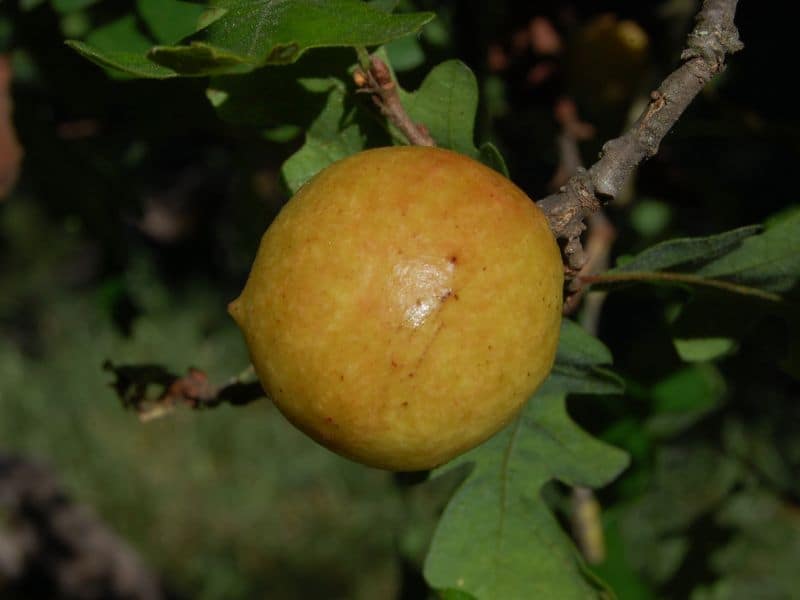
Valley oak requires full sun conditions to achieve optimum growth and health, thriving under direct sunlight for most of the day. While valley oak can tolerate partial sun, its growth may be impeded, with potential impacts on foliage density and overall vigor. The species is adapted to open spaces, suggesting a preference for unobstructed light.
Valley oak demonstrates resilience in its ability to photosynthesize efficiently under various light levels; however, persistent shade can reduce its competitive edge in natural habitats. Planting valley oak outdoors should be in locations where it can receive unfiltered sunlight, avoiding shaded areas to ensure robust development.
Temperature
Valley oak grows in a large range of temperatures. It is adaptable in hardiness zones 5-9.It prefers well drained soil with adequate ventilation in the tree canopy. Valley oak will not do well in standing water. Also, leaf molds pose serious threats if the leaves cannot dry out in the wind. So make sure they are not stuck against buildings where rainwater may drain.
Watering
Originating from the woodlands and valleys of California, valley oak is adapted to a Mediterranean climate with wet winters and dry summers. This deciduous oak thrives in deep, well-drained soils and exhibits high drought tolerance once established, requiring minimal supplemental water.
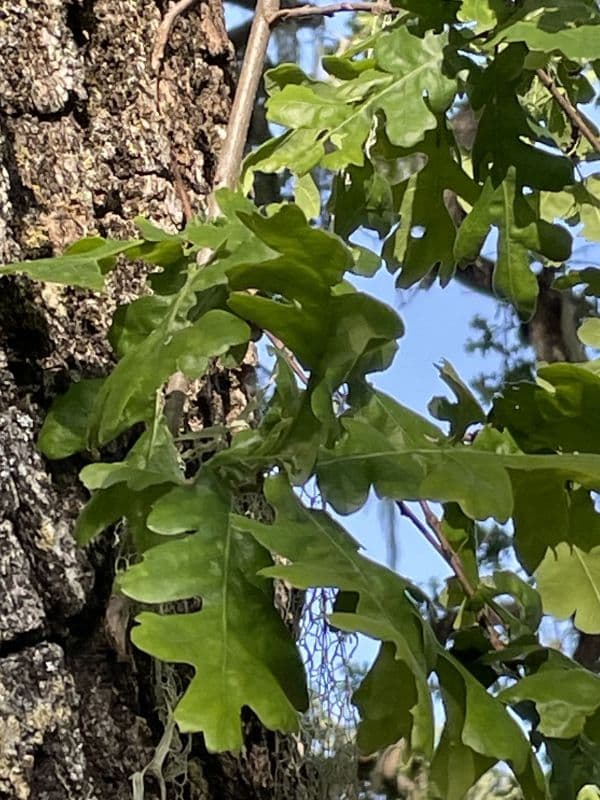
Watering should be done sparingly, approximately once every three weeks. As an outdoor tree, valley oak benefits significantly from the natural seasonal rainfall patterns that align with its growth cycles, making it less dependent on irrigation.
Soil
Ideal soils are well-drained loam, sandy-loam, or sandy-clay soils. Some alluvial fan areas and silts harbor good oaks stands. The key in all of these is that the soil is well-drained. Standing water cannot be tolerated by oaks.
Fertilizing
For optimal growth, valley oak benefits from fertilization that ensures balanced nutrition, especially in its early growth stages and periods of rapid development. High nitrogen fertilizers are recommended during the spring to enhance foliage development.
Fertilization should be moderate – annually or biennially in the case of established trees. A lighter application is advised for mature valley oak to avoid excessive vegetative growth which can lead to limb breakage. Always follow product specific instructions on quantity to avoid root burn. Seasonal adjustments are critical; refrain from late season fertilization which can stimulate new growth susceptible to frost damage.
Gardeners should incorporate fertilizers into the soil around the drip line of the valley oak, rather than near the trunk, to ensure nutrients are accessible to the root system. Safety tip: use protective gear when handling fertilizers.
Pruning
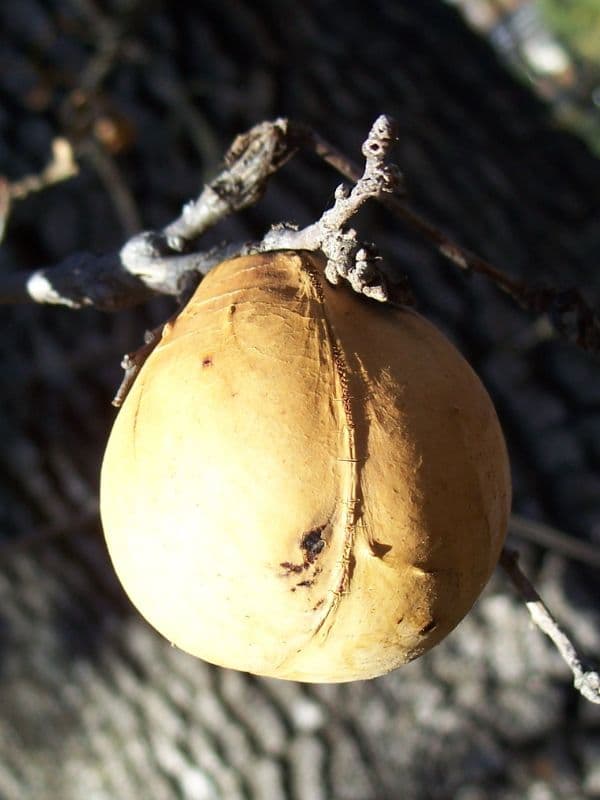
Branches should be pruned to avoid moist pockets or where heavy branches may fall on people or buildings. Avoid having branches that grow with leaves tight together or pressed against buildings. If rain collects in these pockets then molds and fungi can attack. Valley oak love having their leaves dry out in a well ventilated breeze.
To ensure that no danger occurs from the brittle hardwood branches, make sure that heavy branches do not hang over walking paths or outbuildings. Also, do not let children play near oaks in a thunderstorm as they are susceptible to falling branches and lightning strikes.
Transplanting
The ideal season to move valley oak is during S1-S3, as dormant plants face less transplant shock. Choose a location with well-drained soil and full sun. Remember to water it well after transplanting, but never overwater. Enjoy watching valley oak thrive in its new spot!
III. Uses and Benefits
- Ornamental uses
Valley oak proliferates to a large size, making it a valuable tree for creating woodland garden canopies. The drooping branch structure of older trees adds elegant visual interest to the landscape, and this tree also is resistant to wildfire damage, making it a sensible choice for fire-prone areas. In addition, many animals and birds seek out the abundant crops of acorns produced in the fall.
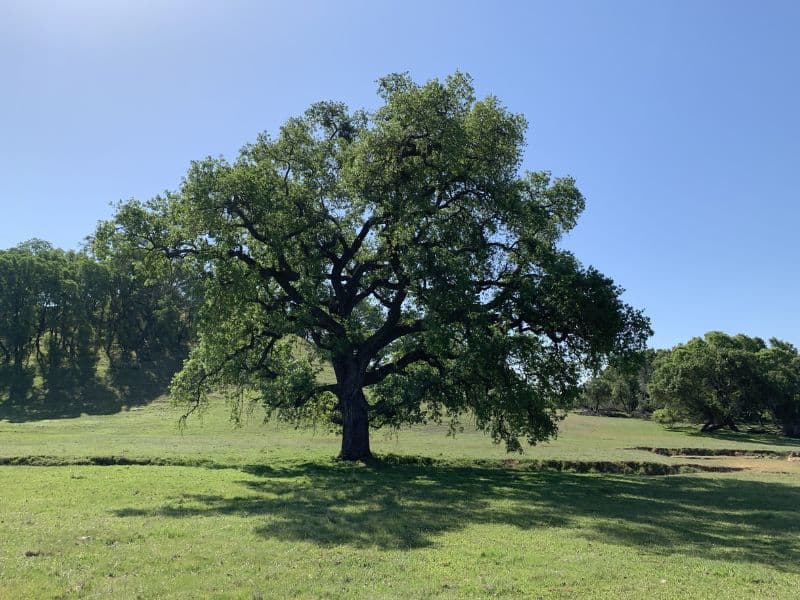
Patrick Wagner
CC BY 4.0
- Culinary uses
The acorns are sweet and edible; Native Americans including the Southern Paiute people roasted them and ground the edible portion into meal to make into bread and mush.
- Other uses
Difficulties in acquiring valley oak wood as well as issues stemming from its drying such as cracking and warping have shifted its consumption from a general purpose lumber to a primarily niche product. Valley oak wood has a small, but significant market for use in cabinetry though, and is also suitable for hardwood flooring. Tyloses present in the pores of valley oak wood increase its impermeability to fluids allowing it to be used in the production of water-tight vessels. Such vessels include wine barrels where valley oak wood sees limited role in the composition of and where it has similar properties to other white oaks such as a reduced tannin load compared to the red oaks and an open grain that allows for an increased transfer of oxygen.
Find Where to Buy the Best Valley Oak (Quercus lobata)



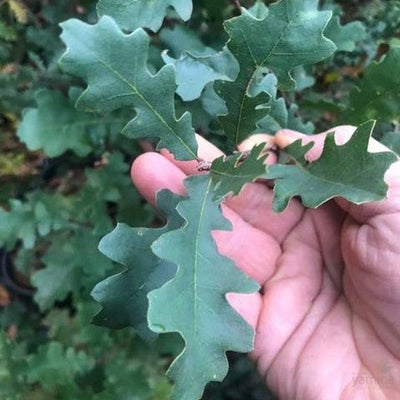














Leave a Reply